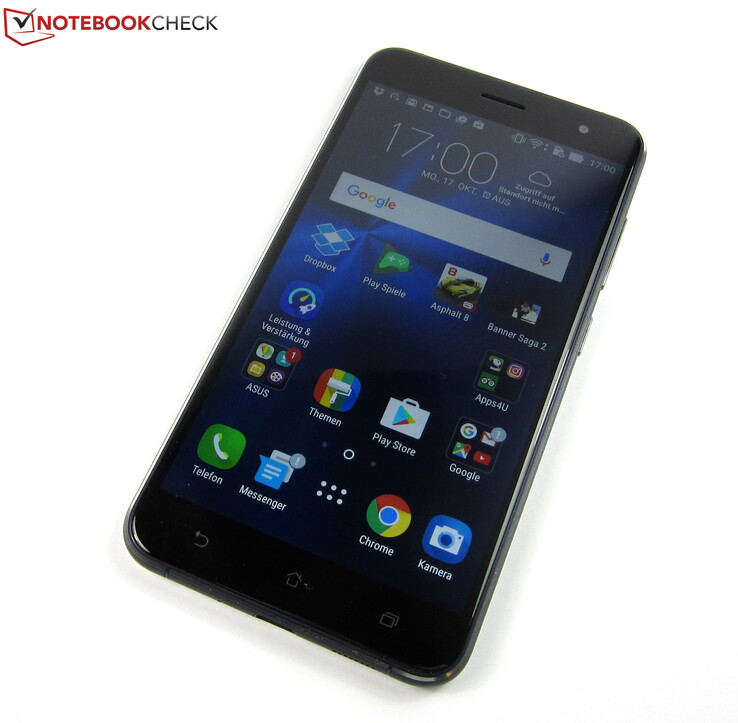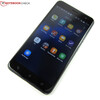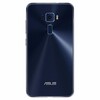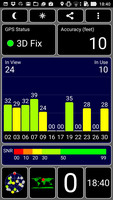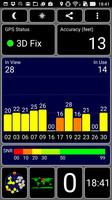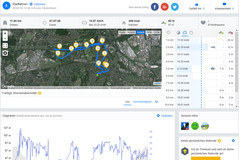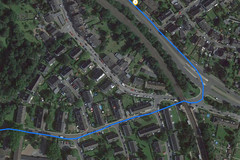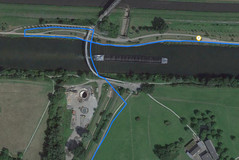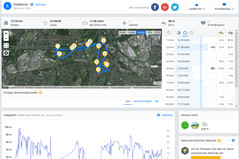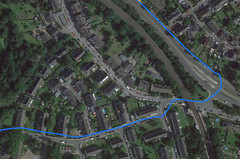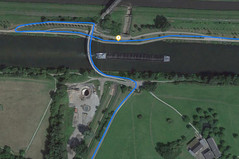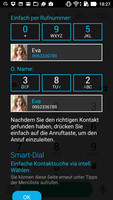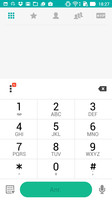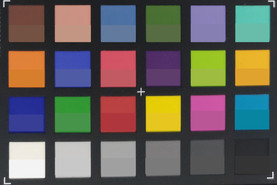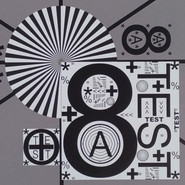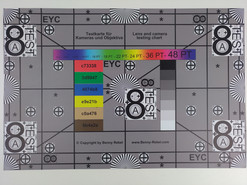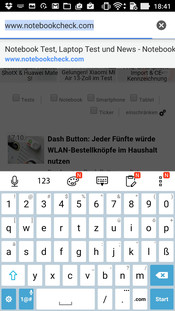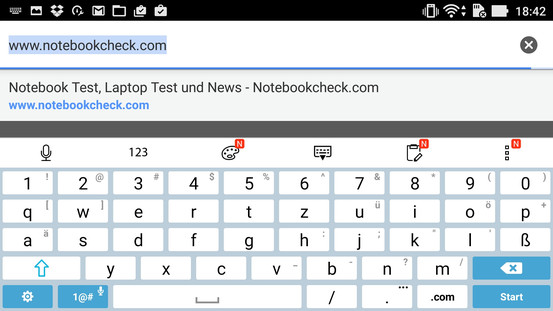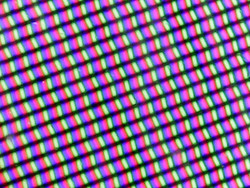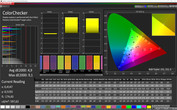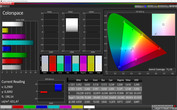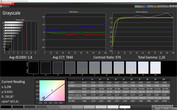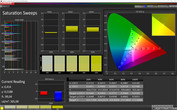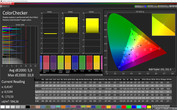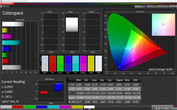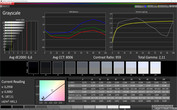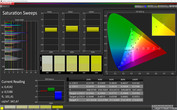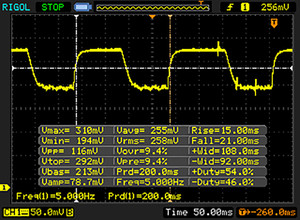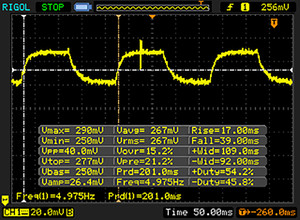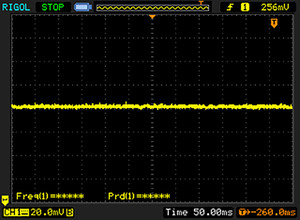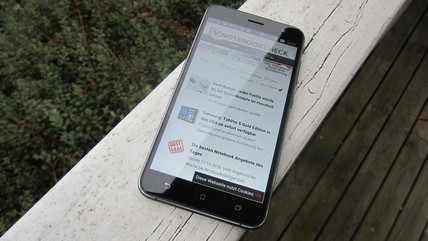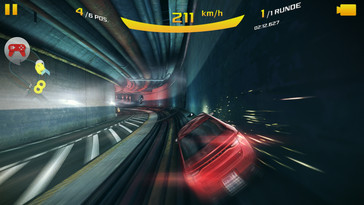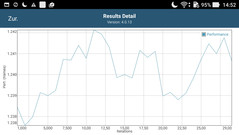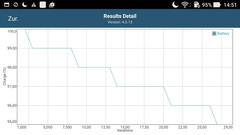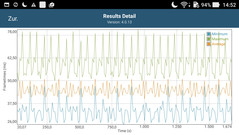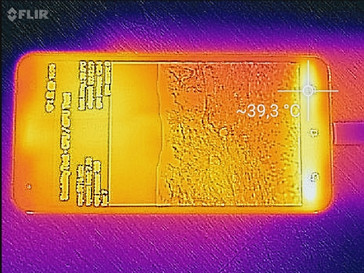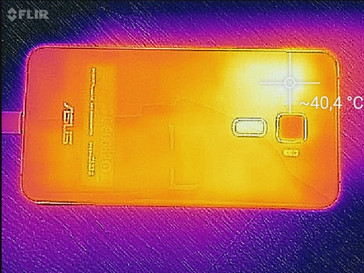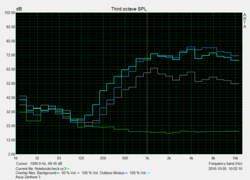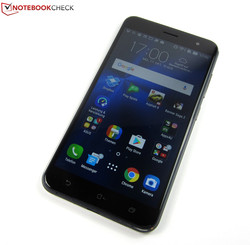Asus ZenFone 3 ZE552KL Smartphone Review

For the original German review, see here.
With the ZenFone 3 ZE552KL, Asus sends a mid-range smartphone into the race, which is supposed to convince primarily with its two (8 and 16 megapixel) camera modules. However, that alone is not enough to outclass the opponents in the hard-fought market sector of up to around 400 Euros (~$440). Therefore, Asus has provided the 5.5-inch ZenFone 3, officially priced at 359 Euros (~$395), other virtues, as well. With a Qualcomm Snapdragon 625 octa-core SoC, integrated Qualcomm Adreno 506 graphics chip, and generous 4 GB of RAM, the ZE552KL is based on a very solid platform that fits well into the smartphone's mid-range positioning. The other configuration specs are also impressive: 64 GB of storage, a 2.5D Corning Gorilla glass-protected IPS panel with a resolution of 1920x1080 pixels, the latest Android 6.0, and a wireless module with Wi-Fi 802.11ac and LTE.
Asus offers other configurations besides the ZE552KL. Starting with the almost technically identical but marginally smaller 5.2-inch ZenFone 3 ZE520KL. It is based on the same SoC, but only sports 3 GB of RAM. The battery capacity is also a bit lower (2650 mAh vs. 3000 mAh). The other two members of the ZenFone 3 family make use of the superlative: The 5.7-inch ZenFone 3 Deluxe configuration of 6 GB of RAM and 256 GB of storage makes it the premium model of the lineup and is allegedly on par with high-end handsets such as Samsung's Galaxy S7. If a smartphone cannot be big enough, the ZenFone 3 Ultra is a genuine phablet with a 6.8-inch screen.
Back to the ZE552KL: We let our review sample compete against the identically configured Honor 8, OnePlus 3, Samsung Galaxy A5 (2016), and ZTE Axon 7.
Case
The slim 7.7-millimeter (~0.3 in) casing of Asus' ZenFone 3 is completely made of metal that is glass protected on both the front and rear. The sleek surfaces display some more fingerprints than smartphones with a matte or rubber-coated back cover would. However, this is not a drawback in terms of feel. The smartphone could be held safely in the test, and it never conveyed the feeling that it would slip out of our hands. Furthermore, the material composition of glass and metal give the ZE552KL high stability - even stronger warping attempts did not affect the smartphone. Nevertheless, the ZenFone 3 is not invulnerable as we accidentally found out: The smartphone sustained some minor injuries after falling from a table. These were, however, limited to superficial scratches on the display's lower right edge (see third screenshot in the gallery).
In total, the ZE552KL looks very high quality. The 2.5D Corning Gorilla glass-protected IPS panel contributes to this to some degree. The screen surface is lightly curved at the corners and edges, and it is inserted seamlessly into the slightly lower surrounding metal bezel. A fingerprint scanner is situated on the rear below the primary camera. It not only allows unlocking the smartphone, but also launches the camera, allows taking photos, and accepting incoming calls.
Asus offers the ZenFone in four different colors: Moonlight White, Shimmer Gold, Aqua Blue and Sapphire Black. The latter adorns our review sample.
Connectivity
Qualcomm's Snapdragon 625 octa-core processor clocks inside Asus' ZenFone 3. It can fall back on 4 GB of LPDDR3 RAM. Technically, the CPU, as well as the integrated Adreno 506 graphics chip, is situated in the mid-range. Applications should thus run just as smoothly as graphically demanding games.
Almost 52 GB of the 64 GB storage in the ZE552KL are available out of the box. The internal storage can be expanded via a micro-SD card when the dual-SIM feature is not used. A maximum of 2 TB is possible. The micro-SD could only be formatted as portable storage and not internal storage in the test. Moving apps to the micro-SD card (App2SD) was thus not possible. In return, the ZE552KL supports DLNA that Asus calls "Digital Media Server", and Miracast ("PlayTo"). Both are found in the settings in the menu item "more". Asus' handset does not support NFC.
A USB 2.0 port is situated on the smartphone's lower edge. It can be used for connecting peripherals via USB OTG. Furthermore, the USB port is implemented as Type-C, which allows connecting plugs with either side since both sides are the same. The USB Type-C port also provides the basis for another convenient feature: The Quick Charge 3.0 technology by Qualcomm. It takes advantage of the higher voltages and electric currents that USB Type-C can provide in contrast to a standard USB port. The deactivated smartphone only needed a bit less than two hours to recharge fully.
Software
Asus ships the ZenFone 3 with Android 6.0.1 Marshmallow. Rather than the stock user interface, Asus installs its self-developed ZenUI 3.0. ZenUI does not change the fundamental handling compared with the proprietary GUI. However, it involves a slightly different design and interesting additional features. Furthermore, the latest iteration of ZenUI is also a bit more colorful than the former ZenUI 2.0.
For example, animated backgrounds and the app "Game Genie" that allows streaming games via YouTube and Twitch are new. "Mobile Asus Manager" is also preloaded. This is a kind of tuning app that, for example, frees storage, regulates power consumption, and scans the smartphone for security risks. The tool collection also includes known applications, such as the "Laser Ruler". This app uses the ZenFone 3's laser autofocus to measure the distance between the smartphone and a determined object. However, this only functions over short distances of up to 1.5 meters (~4.9 feet).
Besides many practical apps, Asus has also preloaded a number of niche apps, like TripAdvisor, Puffin or MiniMovie, on the smartphone. Less would have been more here since these apps cannot be uninstalled, but at most disabled and thus unnecessarily reserve storage capacity.
Communication and GPS
Asus' ZenFone 3 supports the 802.11 a/b/g/n/ac Wi-Fi standards in the 2.4 and 5 GHz networks. Although data sharing via our Linksys EA8500 was very stable, it was also disappointingly slow. The smartphone barely surpassed 30 MBit/s. Rivals, such as OnePlus' 3 and ZTE's Axon 7, are pretty much exactly ten times faster in Wi-Fi.
Our ZenFone 3 review sample is the international version supporting up to LTE Cat. 4 (150 MBit/s max. down; max. 50 MBit/s up). According to the specifications, the same smartphone for the Chinese market supports speeds of up to LTE Cat. 7 (300 MBit/s down; 100 Mbit up) while certain Asian territories like Taiwan, Japan, Hong Kong, Philippines, and Singapore support Cat. 6 (300 MBit/s down; 50 MBit/s up).
| Networking | |
| iperf3 transmit AX12 | |
| OnePlus 3 | |
| ZTE Axon 7 | |
| Asus Zenfone 3 ZE552KL | |
| iperf3 receive AX12 | |
| ZTE Axon 7 | |
| OnePlus 3 | |
| Asus Zenfone 3 ZE552KL | |
The ZenFone 3 can utilize GPS, A-GPS, GLONASS, and BDSS for localization. In the test, the smartphone found our position quickly and with high accuracy no matter if we were indoors or out.
We tested how well the ZenFone 3 fares in practice on our approximately 12-kilometer bike test route alongside Garmin's Edge 500 professional GPS for comparison. The ZE552KL did a good job although it sometimes placed us slightly off-route. In the end, the smartphone and professional navigation system only deviated by approximately 200 meters (~220 yards) on the total route. This is negligible in view of the distance. Thus, the ZenFone 3's GPS is sufficient for everyday app use.
Telephone and Call Quality
Big surprises are not expected from a phone app: Contact list, keypad, and call lists - Asus' ZenFone 3 also provides this. When using two SIM cards, one can be preferred for telephony or be set up for call forwarding in case the other card is not available.
The ZenFone 3 made a good impression in calls. The voice quality was impeccable during the test regardless whether the contact used the landline or a mobile network connection. Interfering background noises were not an issue during the calls. The speaker's position in the ZenFone 3 proved advantageous in hands-free mode. The contact is clear even when the ZenFone 3 is placed on a table since the small sound membranes are situated on the smartphone's lower edge.
Cameras
The ZenFone 3 has an 8-megapixel webcam with an f/2.0 aperture, which promises decent light sensitivity. In fact, the webcam produces satisfactory pictures at up to 3264x2448 pixels, which can also be prettied up via additional photo modes, such as beautify (especially for selfies), HDR or GIF animations. The webcam records videos at up to 1920x1080 pixels and 30 frames per second.
The 16-megapixel primary camera also relies on an f/2.0 aperture. The camera lens is Sony's IMX298 with six camera lenses and optical image stabilizer. The focus system is a triple mechanism called "TriTech", in which a contrast-based autofocus works together with a laser autofocus and phase detection autofocus. According to the spec sheet, it focuses within 30 milliseconds - it functioned impeccably in testing routine. Other features are a dual-LED flash, a selectable HDR function and the option of setting important photography parameters like sensitivity, white balance, and exposure time manually.
Photos in the native resolution (4656x3492 pixels) are only possible in the 4:3 format. The resolution has to be reduced to 12 megapixels for 16:9 photos. The video quality can be increased up to 4K (3840x2160 pixels).
At first glance, the 16-megapixel camera delivers good photos with vivid colors. The photos are not bad even when looking closer. However, fine image details are only displayed more or less faded up to frayed in every single test photo. ZTE's Axon 7 and OnePlus' 3 do a much better job here, and they both add a bit more dynamics. Then again, Asus' handset fares well in night shots although image noise becomes apparent fairly quickly.
Besides our test photos, we check the sharpness and colors in defined test conditions. For this, we photograph ColorChecker Passport and our test chart as full-frame as possible. The photos are not edited afterward. The ZenFone 3 reproduced colors are a bit too warm and saturated - although this does not really look natural, the photos look good with it. Users can set the color temperature manually if the reproduction does not appeal to them. The ZenFone 3's definition is satisfactory although the transitions between the single photo elements are always slightly frayed.
Accessories and Warranty
Asus ships the ZenFone 3 with a modular power supply, USB Type-C cable, an in-ear headset, a quick start guide, and warranty card. The manufacturer does not offer any product-specific accessories for its smartphone on its website. The ZenFone 3 comes with a 24-month warranty. The battery and included accessories are only covered for 6 months. Please see our Guarantees, Return Policies & Warranties FAQ for country-specific information.
Input Devices and Handling
The capacitive touchscreen in Asus' ZenFone 3 offers the fingers little resistance and can process up to 10 inputs simultaneously. The Full HD panel implements commands very quickly and accurately up into the corners. This even worked when wearing gloves. The ZenUI interface can then be used just as smoothly. Stutters or other interruptions of any kind were not noticed during the test.
The virtual keyboard's diverse input options are praiseworthy. It fades in a number bar and facilitates handling via swipe inputting and word suggestions by default. The keyboard can be scaled up by up to two-thirds of the screen optionally, but not much of the screen content remains then. The Android buttons are implemented as sensor keys below the screen, but they are unfortunately not backlit.
One screen setting that could contribute to more comfortable operation is the blue light filter that can be activated via screen and quick settings. It reduces blue light to prevent eyestrain.
Display
The IPS panel in Asus' ZenFone 3 has a resolution of 1920x1080 pixels and achieves a high pixel density of 401 PPI, which results in a razor-sharp reproduction. Furthermore, a very homogeneous illumination of 93 percent and high brightness, on average 633.2 cd/m², very clearly outperforms the competition. OnePlus' 3 and Honor's 8 are the first to follow at quite some long distance with 431 cd/m² and 443 cd/m². The ZenFone 3 can automatically adapt the screen brightness via its ambient light sensor so that it does not get too bright. For a change, the ZE552KL does not present a top rate in black level with 0.66 cd/m², but its high contrast of 997:1 compensate this.
Users can choose among the four display color modes "Balance", "Blue light filter", "Vivid", and "Adapted". The relatively color-neutral "Balance" mode is set by default while switching to "Vivid" visibly brightens up the reproduction.
| |||||||||||||||||||||||||
Brightness Distribution: 93 %
Center on Battery: 658 cd/m²
Contrast: 997:1 (Black: 0.66 cd/m²)
ΔE ColorChecker Calman: 4.9 | ∀{0.5-29.43 Ø4.82}
ΔE Greyscale Calman: 5.8 | ∀{0.09-98 Ø5.1}
Gamma: 2.26
CCT: 7840 K
| Asus Zenfone 3 ZE552KL IPS, 1920x1080, 5.5" | OnePlus 3 Optic-AMOLED, 1920x1080, 5.5" | Samsung Galaxy A5 2016 Super AMOLED, 1920x1080, 5.2" | Honor 8 IPS, 1920x1080, 5.2" | ZTE Axon 7 AMOLED, 2560x1440, 5.5" | |
|---|---|---|---|---|---|
| Screen | -9% | 18% | -6% | -18% | |
| Brightness middle | 658 | 419 -36% | 378 -43% | 451 -31% | 328 -50% |
| Brightness | 633 | 431 -32% | 380 -40% | 443 -30% | 334 -47% |
| Brightness Distribution | 93 | 84 -10% | 91 -2% | 93 0% | 88 -5% |
| Black Level * | 0.66 | 0.4 39% | |||
| Contrast | 997 | 1128 13% | |||
| Colorchecker dE 2000 * | 4.9 | 4.1 16% | 1.95 60% | 5.4 -10% | 4.6 6% |
| Colorchecker dE 2000 max. * | 9.1 | 12 -32% | 3.09 66% | 9.9 -9% | 14.7 -62% |
| Greyscale dE 2000 * | 5.8 | 3.3 43% | 1.86 68% | 6.7 -16% | 2.8 52% |
| Gamma | 2.26 97% | 2.1 105% | 2.13 103% | 2.33 94% | 2.29 96% |
| CCT | 7840 83% | 6550 99% | 6376 102% | 8262 79% | 6612 98% |
| Color Space (Percent of AdobeRGB 1998) | 89.38 | ||||
| Color Space (Percent of sRGB) | 100 |
* ... smaller is better
Examining the ZenFone 3's subjectively impeccable reproduction in an objective test using a spectrophotometer and professional CalMAN software exhibits some weaknesses after all. The shifts in the color and grayscale reproduction are both higher than ideal (DeltaE <3) in the preset "Balance" mode. The color temperature of 7840 K also clearly overshoots the target (6500 K), which lets the image look slightly too cool. Then, all aberrations are even a bit higher in "Vivid" mode. However, the measured inaccuracies are virtually not noticed in everyday use, especially since the color reproduction can be set at will.
Display Response Times
| ↔ Response Time Black to White | ||
|---|---|---|
| 36 ms ... rise ↗ and fall ↘ combined | ↗ 15 ms rise | |
| ↘ 21 ms fall | ||
| The screen shows slow response rates in our tests and will be unsatisfactory for gamers. In comparison, all tested devices range from 0.1 (minimum) to 240 (maximum) ms. » 93 % of all devices are better. This means that the measured response time is worse than the average of all tested devices (20.5 ms). | ||
| ↔ Response Time 50% Grey to 80% Grey | ||
| 56 ms ... rise ↗ and fall ↘ combined | ↗ 17 ms rise | |
| ↘ 39 ms fall | ||
| The screen shows slow response rates in our tests and will be unsatisfactory for gamers. In comparison, all tested devices range from 0.165 (minimum) to 636 (maximum) ms. » 92 % of all devices are better. This means that the measured response time is worse than the average of all tested devices (32 ms). | ||
Screen Flickering / PWM (Pulse-Width Modulation)
| Screen flickering / PWM not detected | |||
In comparison: 53 % of all tested devices do not use PWM to dim the display. If PWM was detected, an average of 8327 (minimum: 5 - maximum: 343500) Hz was measured. | |||
Thanks to the screen's high brightness, the viewing angle stable Asus ZenFone 3 is very suitable for outdoor use. Of course, the reflective glass surface is distracting in unfavorable light conditions, but it ultimately does not affect use decisively. The ZenFone 3 also reaps in good ratings in viewing angle stability thanks to its IPS panel. The screen only looks a bit brighter or darker in extreme viewing perspectives, but this does not have an impact on legibility.
Performance
Powered by Qualcomm's mid-range Snapdragon 625 and 4 GB of RAM, Asus' ZenFone 3 achieves a decent performance that always ensured a smooth workflow in the test. The benchmarks illustrate the smartphone's real potentials. The ZenFone 3 places itself just before Samsung's Galaxy A5 (2016) but cannot catch up to the overall slightly faster Honor's 8 and OnePlus' 3 in the synthetic tests.
| AnTuTu v6 - Total Score (sort by value) | |
| Asus Zenfone 3 ZE552KL | |
| ZTE Axon 7 | |
| Honor 8 | |
| Samsung Galaxy A5 2016 | |
| OnePlus 3 | |
| Geekbench 4.0 | |
| 64 Bit Multi-Core Score (sort by value) | |
| Asus Zenfone 3 ZE552KL | |
| ZTE Axon 7 | |
| Honor 8 | |
| OnePlus 3 | |
| 64 Bit Single-Core Score (sort by value) | |
| Asus Zenfone 3 ZE552KL | |
| ZTE Axon 7 | |
| Honor 8 | |
| OnePlus 3 | |
| 3DMark | |
| 1280x720 offscreen Ice Storm Unlimited Score (sort by value) | |
| Asus Zenfone 3 ZE552KL | |
| ZTE Axon 7 | |
| Honor 8 | |
| Samsung Galaxy A5 2016 | |
| OnePlus 3 | |
| 1280x720 offscreen Ice Storm Unlimited Graphics Score (sort by value) | |
| Asus Zenfone 3 ZE552KL | |
| ZTE Axon 7 | |
| Honor 8 | |
| Samsung Galaxy A5 2016 | |
| OnePlus 3 | |
| 1280x720 offscreen Ice Storm Unlimited Physics (sort by value) | |
| Asus Zenfone 3 ZE552KL | |
| ZTE Axon 7 | |
| Honor 8 | |
| Samsung Galaxy A5 2016 | |
| OnePlus 3 | |
| 2560x1440 Sling Shot OpenGL ES 3.0 (sort by value) | |
| Asus Zenfone 3 ZE552KL | |
| ZTE Axon 7 | |
| Honor 8 | |
| Samsung Galaxy A5 2016 | |
| OnePlus 3 | |
| 2560x1440 Sling Shot OpenGL ES 3.0 Graphics (sort by value) | |
| Asus Zenfone 3 ZE552KL | |
| ZTE Axon 7 | |
| Honor 8 | |
| Samsung Galaxy A5 2016 | |
| OnePlus 3 | |
| 2560x1440 Sling Shot OpenGL ES 3.0 Physics (sort by value) | |
| Asus Zenfone 3 ZE552KL | |
| ZTE Axon 7 | |
| Honor 8 | |
| Samsung Galaxy A5 2016 | |
| OnePlus 3 | |
| GFXBench (DX / GLBenchmark) 2.7 | |
| T-Rex Onscreen (sort by value) | |
| Asus Zenfone 3 ZE552KL | |
| ZTE Axon 7 | |
| Honor 8 | |
| Samsung Galaxy A5 2016 | |
| OnePlus 3 | |
| 1920x1080 T-Rex Offscreen (sort by value) | |
| Asus Zenfone 3 ZE552KL | |
| ZTE Axon 7 | |
| Honor 8 | |
| Samsung Galaxy A5 2016 | |
| OnePlus 3 | |
| GFXBench 3.0 | |
| on screen Manhattan Onscreen OGL (sort by value) | |
| Asus Zenfone 3 ZE552KL | |
| ZTE Axon 7 | |
| Honor 8 | |
| Samsung Galaxy A5 2016 | |
| OnePlus 3 | |
| 1920x1080 1080p Manhattan Offscreen (sort by value) | |
| Asus Zenfone 3 ZE552KL | |
| ZTE Axon 7 | |
| Honor 8 | |
| Samsung Galaxy A5 2016 | |
| OnePlus 3 | |
| GFXBench 3.1 | |
| on screen Manhattan ES 3.1 Onscreen (sort by value) | |
| Asus Zenfone 3 ZE552KL | |
| ZTE Axon 7 | |
| Honor 8 | |
| OnePlus 3 | |
| 1920x1080 Manhattan ES 3.1 Offscreen (sort by value) | |
| Asus Zenfone 3 ZE552KL | |
| ZTE Axon 7 | |
| Honor 8 | |
| OnePlus 3 | |
| PCMark for Android - Work performance score (sort by value) | |
| Asus Zenfone 3 ZE552KL | |
| ZTE Axon 7 | |
| Honor 8 | |
| Samsung Galaxy A5 2016 | |
| OnePlus 3 | |
The same impression as in the synthetic tests arises in the browser benchmarks. Again, the ZenFone 3 passes the finish line before the Samsung Galaxy A5 (2016). However, Honor 8 and OnePlus 3 are already waiting there.
| Octane V2 - Total Score (sort by value) | |
| Asus Zenfone 3 ZE552KL | |
| OnePlus 3 | |
| Samsung Galaxy A5 2016 | |
| Honor 8 | |
| ZTE Axon 7 | |
| Mozilla Kraken 1.1 - Total (sort by value) | |
| Asus Zenfone 3 ZE552KL | |
| OnePlus 3 | |
| Samsung Galaxy A5 2016 | |
| Honor 8 | |
| ZTE Axon 7 | |
| WebXPRT 2015 - Overall (sort by value) | |
| Asus Zenfone 3 ZE552KL | |
| OnePlus 3 | |
| Samsung Galaxy A5 2016 | |
| Honor 8 | |
| ZTE Axon 7 | |
| JetStream 1.1 - Total Score (sort by value) | |
| Asus Zenfone 3 ZE552KL | |
| OnePlus 3 | |
| Samsung Galaxy A5 2016 | |
| Honor 8 | |
| ZTE Axon 7 | |
* ... smaller is better
Reading and writing data is one of the ZenFone 3's favorite tasks. It sometimes gets Honor's 8 in difficulties in sequential and random data transfer, and it can even surpass OnePlus' 3 in sequential write. Samsung's Galaxy A5 (2016) cannot quite keep up, but it still achieves an above-average write/read performance.
This is just as true for the ZenFone 3 when looking at the micro-SD performance. Although Asus' smartphone cannot fully exhaust the potential of our Toshiba Exceria Pro M401 (max. 95 MB/s read, max. 80 MB/s write), reference card, it achieves good rates with 79.2 MB/s in read and 50.1 MB/s in write.
| AndroBench 3-5 | |
| Sequential Read 256KB (sort by value) | |
| Asus Zenfone 3 ZE552KL | |
| OnePlus 3 | |
| Samsung Galaxy A5 2016 | |
| Honor 8 | |
| ZTE Axon 7 | |
| Sequential Write 256KB (sort by value) | |
| Asus Zenfone 3 ZE552KL | |
| OnePlus 3 | |
| Samsung Galaxy A5 2016 | |
| Honor 8 | |
| ZTE Axon 7 | |
| Random Read 4KB (sort by value) | |
| Asus Zenfone 3 ZE552KL | |
| OnePlus 3 | |
| Samsung Galaxy A5 2016 | |
| Honor 8 | |
| ZTE Axon 7 | |
| Random Write 4KB (sort by value) | |
| Asus Zenfone 3 ZE552KL | |
| OnePlus 3 | |
| Samsung Galaxy A5 2016 | |
| Honor 8 | |
| ZTE Axon 7 | |
| Sequential Read 256KB SDCard (sort by value) | |
| Asus Zenfone 3 ZE552KL | |
| Honor 8 | |
| ZTE Axon 7 | |
| Sequential Write 256KB SDCard (sort by value) | |
| Asus Zenfone 3 ZE552KL | |
| Honor 8 | |
| ZTE Axon 7 | |
Games
Asus' ZenFone 3 smoothly runs up-to-date Android games. Even hardware-driven games like "Asphalt 8: Airborne" can be played in a higher resolution without the frame rate coming close to the boundary of playable and jerky. The Full HD panel and its tremendous pixel density will also satisfy fans of strategy games, adventures, and MMOs. The ZenFone 3 even clearly displays small yet important image details, such as hit-points, hex grids or percentage values in the character screen, for example in the strategy role game "Banner Saga 2".
| Asphalt 8: Airborne | |||
| Settings | Value | ||
| high | 29 fps | ||
| very low | 29 fps | ||
Emissions
Temperature
With a maximum temperature of 39.1 °C (102.4 °F), the ZenFone 3 is one of the smartphones that barely heat up even during full load. It is even just 31.6 °C (88.9 °F/back) and 33 °C (91.4 °F/front) on average in idling or when using standard apps. As the stress test with GFXBench illustrates, the ZenFone 3 not only pretends to run smoothly. The SoC did not throttle for potential thermal reasons but always stably maintained its high-performance even after running the T-Rex test 30 times.
(+) The maximum temperature on the upper side is 38.6 °C / 101 F, compared to the average of 35.2 °C / 95 F, ranging from 21.9 to 247 °C for the class Smartphone.
(+) The bottom heats up to a maximum of 39.1 °C / 102 F, compared to the average of 34 °C / 93 F
(±) In idle usage, the average temperature for the upper side is 33 °C / 91 F, compared to the device average of 32.9 °C / 91 F.
Speaker
The mono speaker in the ZenFone 3 is situated on the USB port's right and it will thus not be covered when the smartphone is placed on a table. Up to 83.7 dB(A) can be extracted from the small speaker. As to the sound, the high tones prevail while mids are scarce and bass is heard only vaguely, at best. However, this is true for most smartphone sound systems, which only sound good when connecting a headset. Conveniently, this is part of the ZE552KL's accessories.
Asus Zenfone 3 ZE552KL audio analysis
(+) | speakers can play relatively loud (83.7 dB)
Bass 100 - 315 Hz
(-) | nearly no bass - on average 33% lower than median
(±) | linearity of bass is average (9.9% delta to prev. frequency)
Mids 400 - 2000 Hz
(+) | balanced mids - only 4% away from median
(+) | mids are linear (5.7% delta to prev. frequency)
Highs 2 - 16 kHz
(+) | balanced highs - only 2.8% away from median
(+) | highs are linear (6.1% delta to prev. frequency)
Overall 100 - 16.000 Hz
(±) | linearity of overall sound is average (21.7% difference to median)
Compared to same class
» 42% of all tested devices in this class were better, 8% similar, 50% worse
» The best had a delta of 12%, average was 36%, worst was 134%
Compared to all devices tested
» 60% of all tested devices were better, 7% similar, 33% worse
» The best had a delta of 4%, average was 24%, worst was 134%
ZTE Axon 7 audio analysis
(+) | speakers can play relatively loud (87.1 dB)
Bass 100 - 315 Hz
(-) | nearly no bass - on average 25.8% lower than median
(±) | linearity of bass is average (12.3% delta to prev. frequency)
Mids 400 - 2000 Hz
(±) | higher mids - on average 6% higher than median
(+) | mids are linear (4.6% delta to prev. frequency)
Highs 2 - 16 kHz
(±) | higher highs - on average 7.7% higher than median
(±) | linearity of highs is average (7% delta to prev. frequency)
Overall 100 - 16.000 Hz
(±) | linearity of overall sound is average (24.4% difference to median)
Compared to same class
» 56% of all tested devices in this class were better, 7% similar, 36% worse
» The best had a delta of 12%, average was 36%, worst was 134%
Compared to all devices tested
» 73% of all tested devices were better, 6% similar, 22% worse
» The best had a delta of 4%, average was 24%, worst was 134%
Honor 8 audio analysis
(+) | speakers can play relatively loud (84.7 dB)
Bass 100 - 315 Hz
(-) | nearly no bass - on average 24% lower than median
(±) | linearity of bass is average (12.1% delta to prev. frequency)
Mids 400 - 2000 Hz
(+) | balanced mids - only 4.1% away from median
(+) | mids are linear (5.3% delta to prev. frequency)
Highs 2 - 16 kHz
(±) | higher highs - on average 11.8% higher than median
(±) | linearity of highs is average (7.2% delta to prev. frequency)
Overall 100 - 16.000 Hz
(±) | linearity of overall sound is average (28% difference to median)
Compared to same class
» 71% of all tested devices in this class were better, 5% similar, 24% worse
» The best had a delta of 12%, average was 36%, worst was 134%
Compared to all devices tested
» 84% of all tested devices were better, 3% similar, 13% worse
» The best had a delta of 4%, average was 24%, worst was 134%
Samsung Galaxy A5 2016 audio analysis
(+) | speakers can play relatively loud (87.7 dB)
Bass 100 - 315 Hz
(-) | nearly no bass - on average 33.7% lower than median
(±) | linearity of bass is average (11.1% delta to prev. frequency)
Mids 400 - 2000 Hz
(+) | balanced mids - only 4.2% away from median
(+) | mids are linear (5.4% delta to prev. frequency)
Highs 2 - 16 kHz
(+) | balanced highs - only 4.7% away from median
(±) | linearity of highs is average (8.4% delta to prev. frequency)
Overall 100 - 16.000 Hz
(±) | linearity of overall sound is average (22.1% difference to median)
Compared to same class
» 44% of all tested devices in this class were better, 7% similar, 49% worse
» The best had a delta of 12%, average was 36%, worst was 134%
Compared to all devices tested
» 62% of all tested devices were better, 6% similar, 31% worse
» The best had a delta of 4%, average was 24%, worst was 134%
OnePlus 3 audio analysis
(+) | speakers can play relatively loud (88.6 dB)
Bass 100 - 315 Hz
(-) | nearly no bass - on average 30.9% lower than median
(±) | linearity of bass is average (11.3% delta to prev. frequency)
Mids 400 - 2000 Hz
(+) | balanced mids - only 4.2% away from median
(+) | mids are linear (4.9% delta to prev. frequency)
Highs 2 - 16 kHz
(±) | higher highs - on average 5.6% higher than median
(+) | highs are linear (3.2% delta to prev. frequency)
Overall 100 - 16.000 Hz
(±) | linearity of overall sound is average (21.8% difference to median)
Compared to same class
» 42% of all tested devices in this class were better, 8% similar, 50% worse
» The best had a delta of 12%, average was 36%, worst was 134%
Compared to all devices tested
» 60% of all tested devices were better, 7% similar, 33% worse
» The best had a delta of 4%, average was 24%, worst was 134%
Frequency diagram in comparison (checkboxes above can be turned on/off!)
Energy Management
Power Consumption
The ZenFone 3 can fall back on a 3000 mAh, non-removable, lithium-ion battery, and it combines this with an overall low power consumption. Although the smartphone has the highest idle power consumption with 2.12 watts, it belongs to the top energy-savers with 5.46 watts when loaded. Samsung's Galaxy A5 (2016) is most frugal with 5.08 watts. The ZenFone 3 supports Quick Charge 3.0 and was fully recharged in roughly two hours in the test.
| Off / Standby | |
| Idle | |
| Load |
|
Key:
min: | |
| Asus Zenfone 3 ZE552KL 3000 mAh | OnePlus 3 3000 mAh | Samsung Galaxy A5 2016 2900 mAh | Honor 8 3000 mAh | ZTE Axon 7 3250 mAh | |
|---|---|---|---|---|---|
| Power Consumption | -12% | 9% | -7% | -5% | |
| Idle Minimum * | 0.83 | 0.57 31% | 0.96 -16% | 0.78 6% | 0.64 23% |
| Idle Average * | 2.11 | 1.24 41% | 1.64 22% | 1.89 10% | 0.84 60% |
| Idle Maximum * | 2.12 | 1.36 36% | 1.71 19% | 2.02 5% | 0.87 59% |
| Load Average * | 3.41 | 5.92 -74% | 2.98 13% | 5.28 -55% | 6.02 -77% |
| Load Maximum * | 5.46 | 10.53 -93% | 5.08 7% | 5.44 -0% | 10.45 -91% |
* ... smaller is better
Battery Runtime
Although all comparison devices have a virtually identical battery capacity, they present very different runtimes. The ZenFone 3 and OnePlus' 3 are up front. The ZenFone 3 lasted over 13 hours in the practical Wi-Fi test, which should be enough for roughly two days of consistent browsing. Only OnePlus' 3 is better with exactly 14 hours among the comparison devices. The ZenFone played our Full HD test video ("Big Buck Bunny") over 15 hours before it was depleted. Even OnePlus' 3 cannot compete with that, but it still achieves a very good runtime of 14 hours and 7 minutes.
| Asus Zenfone 3 ZE552KL 3000 mAh | OnePlus 3 3000 mAh | Samsung Galaxy A5 2016 2900 mAh | Honor 8 3000 mAh | ZTE Axon 7 3250 mAh | |
|---|---|---|---|---|---|
| Battery Runtime | -9% | 11% | -27% | -21% | |
| Reader / Idle | 1502 | 1338 -11% | 2323 55% | 1487 -1% | 1735 16% |
| H.264 | 905 | 847 -6% | 672 -26% | 526 -42% | 704 -22% |
| WiFi v1.3 | 797 | 840 5% | 626 -21% | 499 -37% | 411 -48% |
| Load | 352 | 268 -24% | 483 37% | 255 -28% | 245 -30% |
Pros
Cons
Verdict
Asus places a very stylish, 5.5-inch smartphone at the starting line that also convinces with inner values. With Qualcomm's Snapdragon 625 octa-core processor and 4 GB of RAM, the ZenFone has plenty of power that will be enough for all up-to-date applications and games. Furthermore, features like a very bright and viewing angle stable, Full HD panel and a 16-megapixel camera that shoots satisfactory photos are also present. The good configuration also includes LTE, a dual-SIM slot, a Type-C reversible USB port including Quick Charge technology, and a fingerprint scanner. The latest Android 6.0.1 Marshmallow, which Asus covers with the new version of its ZenUI interface, rounds off the successful package. The long battery life and low temperature development during use should not be left unmentioned.
Asus has created a designer piece with its ZenFone 3. The mid-range smartphone looks considerably more expensive than it actually is.
There is not much to criticize. The Android keys below the screen are not backlit and transferring data via Wi-Fi is more sluggish than fast. Asus is also a bit too generous with the software configuration and unnecessarily preloads many apps on the smartphone. In the test, we could not move apps to our micro-SD cards since they could not be formatted as internal storage.
Asus Zenfone 3 ZE552KL
- 10/21/2016 v5.1 (old)
Manuel Masiero




